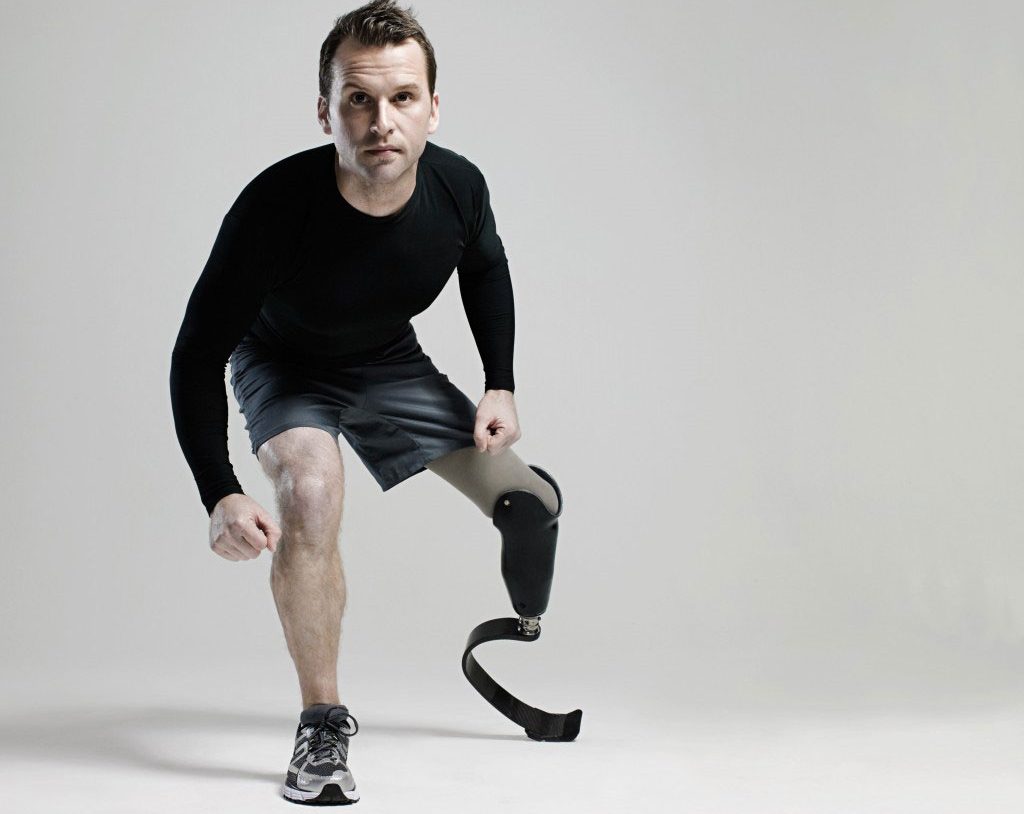Caring for People with War-Related Amputations

Better protection and first-aid, faster evacuation, and more sophisticated surgical care have improved survival rates for people who lose limbs during combat.
In the 20th Century, people who lost limbs during combat often died. But better protection and first-aid in the war arena, faster evacuation, and more sophisticated surgical care have improved survival rates.
Many injured veterans qualify for disability benefits, and physical therapy and prostheses — artificial limbs — can keep them moving. It’s even possible to return to active duty and keep your responsibilities.
YOU MIGHT ALSO LIKE: Mindfulness Helps Veterans with PTSD Cope and Heal
Caring for people with war-related amputations
The U.S. Department of Defense has three world-class centers for rehabilitation, largely treating active service members in San Diego, Calif.; San Antonio, Texas; and Bethesda, Md.
The U.S. Department of Veterans Affairs (VA) has seven regional amputation centers that house the highest level of specialized expertise in clinical care and technology, providing rehabilitative care to the most complex cases. It also has 18 sites that may be closer to your home. The VA’s Prosthetics and Sensory Aids Service is the largest and most comprehensive provider of prosthetic devices and sensory aids in the world.
One technology improves the communication between nerves and an artificial limb. Previous systems allowed users to send a signal to the limb but didn’t get the kind of feedback you would with a real limb.
Called an agonist-antagonist myoneural interface (AMI, pronounced “ay-mee”), the technology includes two parts. When one contracts, the other expands. The user contracts the AMI to initiate movement. The expansion of the other half sends signals back to the nervous system.
With osseointegration, an advanced reconstructive surgery technique for amputees, a metal implant connects directly with the bone of the residual limb. Patients tend to achieve better balance and a more natural gait and can avoid discomforts associated with artificial legs that involve a socket.
The devices researchers are working on will let amputees feel and do even more. Engineers at the Johns Hopkins University Applied Physics Lab have restored cold sensation in phantom legs. A robotic arm controlled by the user’s mind has 26 joints can curl up to 45 pounds, interacting directly with their brain.
Trauma and pain
Limb injuries are most disabling when they are accompanied by chronic pain or posttraumatic stress disorder (PTSD), research suggests. The two tend to go together.
Whether you can keep your limb or lose it may not be as important as pain and trauma. In a study of Americans with severe arm injuries sustained during fighting in Iraq and Afghanistan, amputees did not have worse outcomes. Close to 64 percent were working, on active duty, or attending school, and nearly 39 percent were involved in vigorous recreational activities.
But a significant group — almost a third — suffered from PTSD or depression. Similarly, in separate research on veterans with chronic pain, but not necessarily involving limb loss, around a third had PTSD.
Most amputees do move on, however, while some embrace better living with robotics, not drugs, and can achieve impressive feats.
Athletic achievement
At the 2023 Paralympic in Santiago, Chile, 23 athletes of Team USA had military ties, competing in track and field, shooting, and cycling.
More than 200 wounded, ill, and injured service members and veterans participated in the 2023 Warrior Games in San Diego, in several sports including:
- Archery
- Track and field
- Swimming
- Rowing
- Shooting
- Powerlifting
- Sitting-volleyball
- Wheelchair basketball
- Wheelchair rugby
Contestants were able to run, jump, and throw using some of the latest technology.
How caregivers can help
As a caregiver, help your loved one get encouragement from people who have lived with their losses.
The Amputee Coalition has trained more than 1,500 certified peer visitors to meet with you (email: peersupport@amputee-coalition.org) and keeps a list of more than 300 amputee support groups across the nation.
Check out the Coalition site for literature on managing pain and other issues and studies in need of amputee volunteers.
Consider your loved one’s next vacation. Debra Kerper, a below knee amputee who has visited more than 30 countries with a wheelchair and a scooter, leads cruises and land tours.
If you or your loved one want to get active in advocacy for independence for the disabled, look into the National Council for Independent Living. You might also contact your local Center for Independent Living to find services.
An observant caregiver sees where help is needed and where it isn’t. Don’t be afraid to ask. Look for patterns in your loved one’s ability to do the basics:
- Standing and sitting
- Climbing stairs
- Getting in and out of a car
- Using the bathroom
Other ways to help include:
- Move major appliances, such as the washer and dryer, from the basement to the main floor.
- Put often used kitchen equipment within easy reach.
- Remove tripping hazards such as area rugs.
- Improve lighting and install nightlights.
- Install grab bars in showers and tubs.
- Hire or provide help for any task that is proving too difficult.
It’s important that you take care of yourself, as well — eating healthily, exercising, seeing friends, and finding ways to relax. For resources and tips on how to cope or thrive as a caregiver, see these organizations:
- Caregiver Action Network
- Family Caregiver Alliance
- National Alliance for Caregiving
- Eldercare Locator
- National Institute on Aging
YOU MIGHT ALSO LIKE: Hope for Veterans Coping with Long-Term Injuries
Updated:
November 30, 2023
Reviewed By:
Janet O’Dell, RN